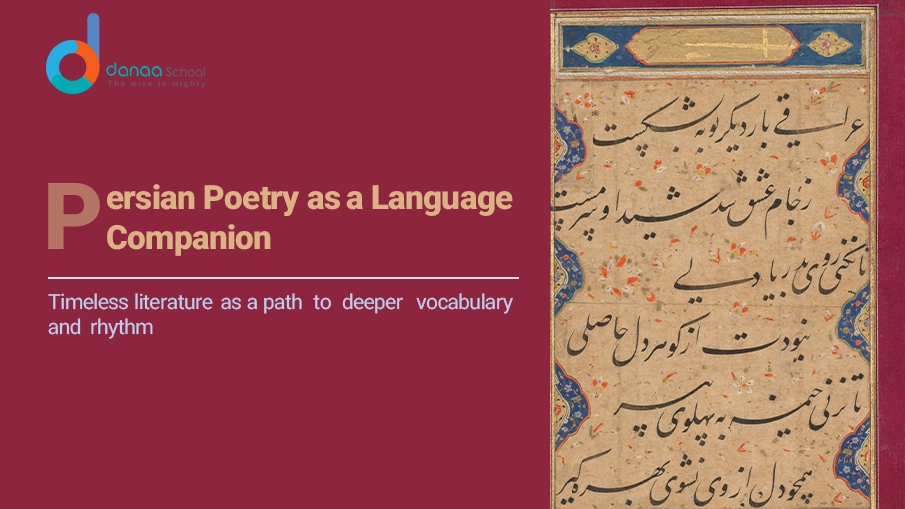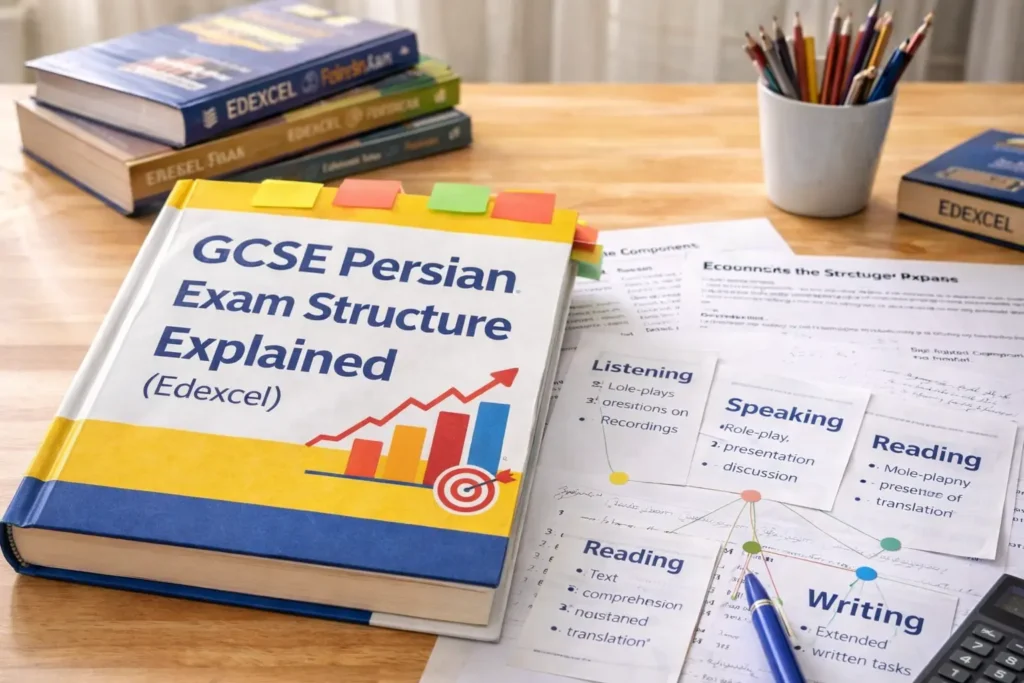A Step-by-Step Guide
Persian (Farsi) is a beautiful and poetic language with a unique sentence structure that differs from English. If you’re learning Persian, understanding its sentence structure is key to forming correct and meaningful sentences. This guide breaks down Persian sentence structure in simple steps, provides useful Persian language phrases, and helps you confidently introduce yourself in Farsi.
Persian Language Sentence Structure: The Basics
In Persian, the sentence structure follows a Subject-Object-Verb (SOV) order, unlike in English, which is Subject-Verb-Object (SVO). This means that in Persian, the verb usually comes at the end of the sentence.
For example:
- English (SVO): I love Persian poetry.
- Persian (SOV): من شعر فارسی را دوست دارم. (Man she’r-e Farsi ra doost daram.)
- Subject (من / Man) → Object (شعر فارسی را / she’r-e Farsi ra) → Verb (دوست دارم / doost daram).
Understanding this fundamental structure will help you form proper sentences as you learn more Persian.
Persian Language Phrases for Everyday Conversations
Learning some essential Persian phrases will help you navigate daily interactions. Here are some commonly used phrases:
| English | Persian (Farsi) | Pronunciation |
| Hello | سلام | Salam |
| How are you? | حال شما چطور است؟ | Hāl-e shomā chetor ast? |
| Thank you | ممنون | Mamnoon |
| Please | لطفاً | Lotfan |
| Yes | بله | Baleh |
| No | نه | Na |
These phrases will help you start conversations and show politeness when speaking with Persian speakers.
Introduction in Farsi: How to Introduce Yourself
Introducing yourself is one of the first things you must learn when studying Persian. Here’s a simple introduction structure:
- My name is [Your Name].
- اسم من [Your Name] است. (Esm-e man [Your Name] ast.)
- I am from [Your Country].
- من اهل [Your Country] هستم. (Man ahl-e [Your Country] hastam.)
- I live in [Your City].
- من در [Your City] زندگی میکنم. (Man dar [Your City] zendegi mikonam.)
- I am learning Persian.
- من دارم فارسی یاد میگیرم. (Man dāram Farsi yād migiram.)
These simple phrases will help you introduce yourself naturally in Persian conversations.
Building Your Farsi Vocabulary
Expanding your Farsi vocabulary is crucial for improving your language skills. Here are some valuable words categorized by topic:
Family Members
- Mother: مادر (Mādar)
- Father: پدر (Pedar)
- Sister: خواهر (Khāhar)
- Brother: برادر (Barādar)
Days of the Week
- Monday: دوشنبه (Doshanbeh)
- Tuesday: سهشنبه (Se-shanbeh)
- Wednesday: چهارشنبه (Chahār-shanbeh)
Common Verbs
- To go: رفتن (Raftan)
- To eat: خوردن (Khordan)
- To sleep: خوابیدن (Khābidan)
A strong vocabulary base will help you construct more advanced sentences and express your thoughts clearly in Persian.
Useful Farsi Phrases for Travel and Daily Life
When traveling in Persian-speaking countries or engaging in daily conversations, these phrases will be handy:
| English | Persian (Farsi) | Pronunciation |
| Where is the restroom? | دستشویی کجاست؟ | Dastshooei kojāst? |
| How much is this? | این چنده؟ | In chandeh? |
| I don’t understand. | من متوجه نمیشوم. | Man motavajeh nemishavam. |
| Can you help me? | میتوانید کمک کنید؟ | Mitavānid komak konid? |
| I need a taxi. | من یک تاکسی میخواهم. | Man yek taxi mikhāham. |
These Farsi phrases will be beneficial for tourists and beginners in the language.
Common Mistakes in Persian Sentence Structure and How to Avoid Them
While learning Persian, some common mistakes can slow down your progress. Here’s how to avoid them:
1. Incorrect Word Order
🚫 من دوست دارم فیلمهای ایرانی را. (Man doost daram film-haye Irani ra.)
✅ من فیلمهای ایرانی را دوست دارم. (Man film-haye Irani ra doost daram.)
2. Forgetting to Use “Ra” for Definite Objects
In Persian, the word “را” (ra) is necessary when referring to a specific object.
🚫 من کتاب خواندم. (Man ketab khāndam.) (This sounds general.)
✅ من کتاب را خواندم. (Man ketab ra khāndam.) (This clarifies a specific book.)
3. Using “Ast” (Is) Unnecessarily
In Persian, you don’t always need to use “است” (ast) at the end of a sentence.
🚫 این ماشین قرمز است. (In māshin ghermez ast.)
✅ این ماشین قرمز است. (In māshin ghermez-e.) (More natural.)
You can quickly improve your Persian sentence structure by paying attention to these details.
Conclusion
Learning Persian doesn’t have to be complicated. By mastering Persian sentence structure, essential vocabulary, and common phrases, you can communicate effectively in Farsi. If you want to further your learning, Danaa School offers expert-led Persian courses designed for beginners and advanced learners.
👉 Start learning Persian today with Danaa School! Join Now
Frequently Asked Questions (FAQs)
1. What is the basic Persian sentence structure?
Persian follows a Subject-Object-Verb (SOV) order, meaning that verbs usually come at the end of sentences.
2. How do I introduce myself in Farsi?
You can say: اسم من [Your Name] است. (Esm-e man [Your Name] ast.) which means “My name is [Your Name].”
3. What are some essential Persian phrases for beginners?
Some useful phrases include سلام (Salam) for “Hello” and ممنون (Mamnoon) for “Thank you.”
4. How can I improve my Persian vocabulary?
Practice daily by learning new words in different categories, such as family, days of the week, and common verbs.
5. What are common mistakes in Persian grammar?
Mistakes include incorrect word order, forgetting “را” (ra) for definite objects, and unnecessary use of “است” (ast).
6. Is Persian hard for English speakers to learn?
Persian is considered a more straightforward language for English speakers than other Middle Eastern languages, as it has no gendered nouns and a relatively simple verb structure.
7. Where can I learn Persian online?
You can learn Persian online with Danaa School, where expert instructors guide you step by step.







